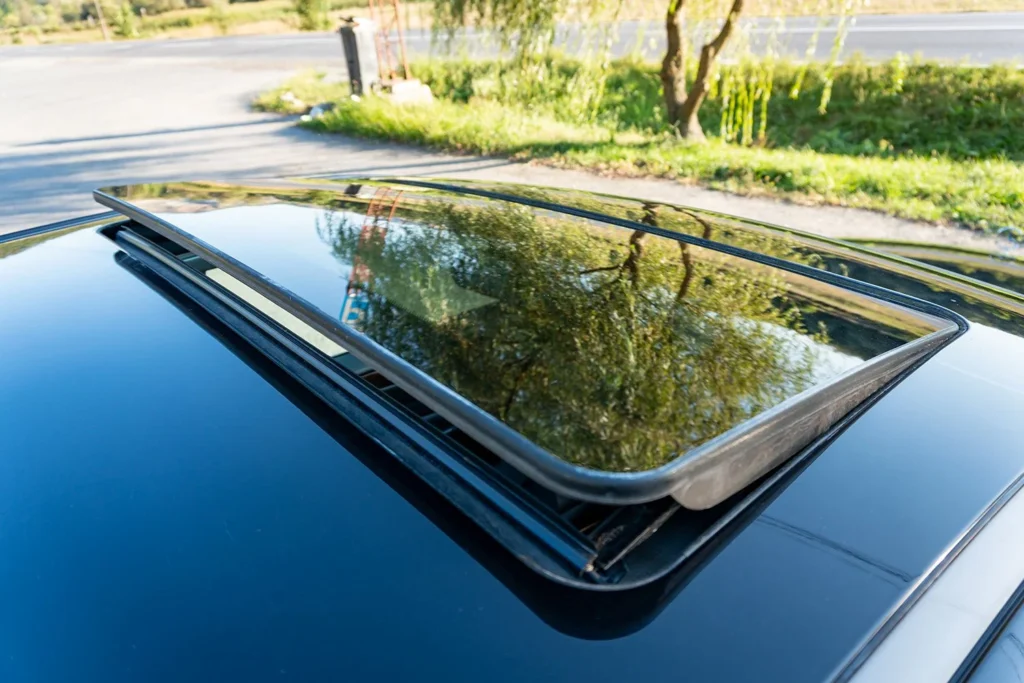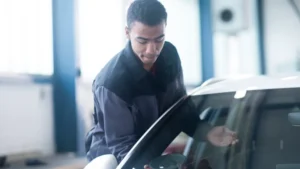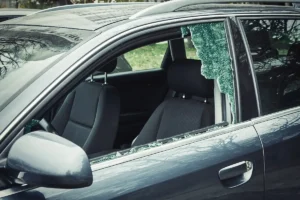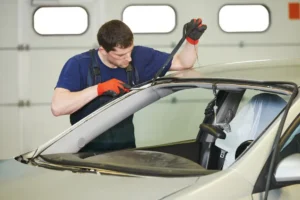Ford F150 Rear Window Replacement Ford F150 rear window replacement is essential for maintaining the...
Contemplating Shade: Should I Tint My Sunroof?
Should I tint my sunroof? This is a question that often arises when considering modifications to enhance a vehicle’s features. Sunroof tinting, a practice gaining popularity among car enthusiasts, involves applying a thin film to the sunroof glass. Before delving into the intricacies of this decision, it’s crucial to understand the basics of sunroof tinting and recognize the importance of contemplating whether to embark on this modification journey.
Benefits of Tinting a Sunroof
Heat Reduction and Temperature Control:
Tinted sunroofs can help in reducing the amount of heat that enters the vehicle, providing a cooler interior. This can be particularly beneficial during hot weather, as it helps in maintaining a comfortable temperature inside the car and reduces the need for excessive air conditioning.
Glare Reduction for Improved Visibility:
Tinted sunroofs can minimize glare from the sun, headlights, and other bright sources of light. This reduction in glare improves visibility for the driver and passengers, making it safer to drive, especially during periods of intense sunlight.
Protection Against UV Rays:
Sunroof tinting can act as a barrier against harmful ultraviolet (UV) rays. UV rays can cause damage to the skin and can lead to the fading of interior surfaces in the car. Tinted sunroofs help in blocking a significant portion of these UV rays, providing protection for both the occupants and the interior of the vehicle.
Enhanced Privacy and Security:
Tinted sunroofs contribute to increased privacy for the vehicle’s occupants. Passersby are less likely to see into the car, enhancing the overall sense of privacy. Additionally, the tinted film may add an extra layer of security by making it more difficult for potential thieves to see valuable items inside the vehicle.
How Dark Should I Tint My Sunroof?

Explanation of Tint Darkness Levels:
Window tint darkness is measured by the percentage of light that can pass through the film. The lower the percentage, the darker the tint. Common tint darkness levels include:
50% and above: Light tint. Allows more light to pass through, offering minimal privacy and heat reduction.
35% to 50%: Light to moderate tint. Provides a balance between visibility and heat reduction.
20% to 35%: Moderate to dark tint. Offers increased privacy and heat reduction, but may affect nighttime visibility.
5% to 20%: Dark tint. Maximum privacy and heat reduction but may significantly limit visibility, especially at night.
Below 5%: Limo tint. Almost complete privacy, but legal restrictions often apply.
DIY vs. Professional Tinting Services:
DIY Tinting:
Pros: Cost-effective, flexibility in choosing tint shades, can be done at home.
Cons: Requires skill and patience, potential for bubbles and imperfections, may not have a professional finish.
Professional Tinting Services:
Pros: Expertise in installation, professional finish, often comes with a warranty, time-saving.
Cons: Higher cost compared to DIY, need to find a reputable installer.
Considerations for Sunroof Design and Structure:
Complexity: Some sunroofs have intricate designs or mechanisms that may complicate the tinting process. It’s essential to consider the sunroof’s structure and whether it may impact the tinting procedure.
Legal Regulations: Check local regulations regarding the allowable tint levels for sunroofs. Exceeding legal limits could result in fines.
Compatibility: Ensure that the tinting material is compatible with the type of glass used in your sunroof to avoid potential damage or interference with its functionality.
Potential Warranty Implications:
DIY Tinting and Warranty: If you opt for a DIY tinting approach, be aware that it might void the warranty on your sunroof. Manufacturers often recommend professional installation to maintain warranty coverage.
Professional Tinting and Warranty: Reputable professional tinting services may offer warranties on their work. It’s important to inquire about these warranties and understand the terms and conditions. If you want professional guidance or services then Texas Reliable Services is best in the business.
Steps to Tinting a Sunroof
Professional Installation Process:
Choose the Right Tint Film: Consult with a professional tinting service to select the appropriate tint film for your sunroof. Consider factors such as legal restrictions, UV protection, and personal preferences.
Clean the Sunroof: Thoroughly clean the sunroof glass to ensure there are no dust, dirt, or debris particles that may interfere with the tinting process.
Precise Measurements: Measure the sunroof dimensions accurately to cut the tint film precisely. Professionals often use computerized cutting equipment for precision.
Film Application: Carefully apply the tint film to the sunroof glass, making sure to smooth out any air bubbles or wrinkles. Professionals often use tools like squeegees for this purpose.
Heat Shrinking: If needed, heat shrinking may be applied to ensure the tint film fits the sunroof’s contours perfectly. This step requires skill and experience.
Trimming Excess Film: Trim any excess tint film to ensure a neat and professional finish. Precision is key to achieving a seamless look.
Drying Time: Allow sufficient time for the tint film to dry and adhere properly to the sunroof glass. Professional installations may involve specific curing processes.
Quality Check: Inspect the tinted sunroof for any imperfections, such as bubbles, creases, or debris trapped under the film. Address any issues before completing the installation.
DIY Tinting Tips and Precautions:
Choose a Suitable Environment: Perform the tinting in a clean, dust-free, and well-ventilated area to minimize the risk of debris getting trapped under the film.
Follow Instructions: Read and follow the manufacturer’s instructions that come with the tint film carefully. Different films may have specific application techniques.
Precise Cutting: Take your time to measure and cut the tint film accurately. Use a sharp utility knife and a straight edge for clean lines.
Application in Sections: Apply the tint film in smaller sections to manage the process better, smoothing out the film as you go to avoid bubbles.
Avoid Overstretching: Be cautious not to overstretch the film, as this can lead to distortions and affect the overall appearance.
Patiently Remove Air Bubbles: If air bubbles appear during the application, use a squeegee to gently push them towards the edges. Small bubbles may disappear as the tint dries.
Take Breaks: Tinting can be time-consuming, so take breaks to avoid fatigue, ensuring that you maintain focus and precision.
Maintenance of Tinted Sunroofs:
Wait Before Cleaning: Allow the tinted sunroof to cure fully before cleaning. This may take a few days, depending on the type of tint film used.
Use Mild Cleaning Solutions: Clean the tinted surface with a mild, non-ammonia-based cleaning solution and a soft, lint-free cloth to avoid scratching the film.
Avoid Abrasive Materials: Refrain from using abrasive materials, harsh chemicals, or sharp objects that may damage or scratch the tinted surface.
Regular Inspection: Periodically inspect the tinted sunroof for any signs of peeling, bubbling, or damage. Promptly address any issues to prevent further deterioration.
Professional Maintenance: Consider professional maintenance or sunroof repairs if you notice significant damage or if the tint begins to degrade over time.
Conclusion
Sunroof tinting is a decision that involves careful consideration of various factors. Summarizing the key points discussed, it is crucial to recognize that sunroof tinting offers benefits such as enhanced UV protection, reduced glare, and improved interior comfort. However, it is equally important to weigh the potential drawbacks, including legal restrictions and the impact on visibility, especially at night. Feel free to contact us for any type of services or the queries like should i tint my sunroof.
FAQs
Why Should I Consider Tinting My Sunroof?
Tinting your sunroof offers various benefits, including enhanced UV protection, reduced glare, and improved interior comfort. It can also contribute to a more aesthetically pleasing appearance.
Are There Any Legal Restrictions On Sunroof Tinting?
Yes, regulations regarding sunroof tinting vary by location. It’s crucial to check local laws to ensure compliance with permissible tint levels and avoid potential legal issues.
Will Tinting My Sunroof Affect Visibility, Especially At Night?
Tinting may have an impact on visibility, particularly at night. Choosing an appropriate tint level and consulting with professionals can help strike a balance between aesthetic preferences and practical considerations.
How Long Does Sunroof Tinting Typically Last?
The longevity of sunroof tinting depends on factors such as the quality of the tint film and installation. High-quality materials and professional installation can contribute to a longer lifespan.
Can I Tint My Sunroof Myself, Or Should I Seek Professional Help?
While some individuals may opt for DIY tinting, professional installation is recommended for optimal results. Professionals have the expertise to ensure a proper fit and adhere to legal standards.
Does Sunroof Tinting Require Special Maintenance?
Tinted sunroofs generally require minimal maintenance. Regular cleaning with mild, non-abrasive cleaners is advisable to preserve the tint film’s clarity and longevity.
Our Services
Our Latest Blogs
Affordable Kia Soul Window Replacement Services
Affordable Kia Soul Window Replacement Services Kia Soul window replacement is a necessary procedure that...
Professional Kia Window Replacement | Trusted Experts
Professional Kia Window Replacement | Trusted Experts Kia window replacement is crucial for maintaining the...
Hyundai Windshield Replacement Made Easy | Trusted Services
Hyundai Windshield Replacement Hyundai windshield replacement services are crucial for maintaining the integrity and safety...





